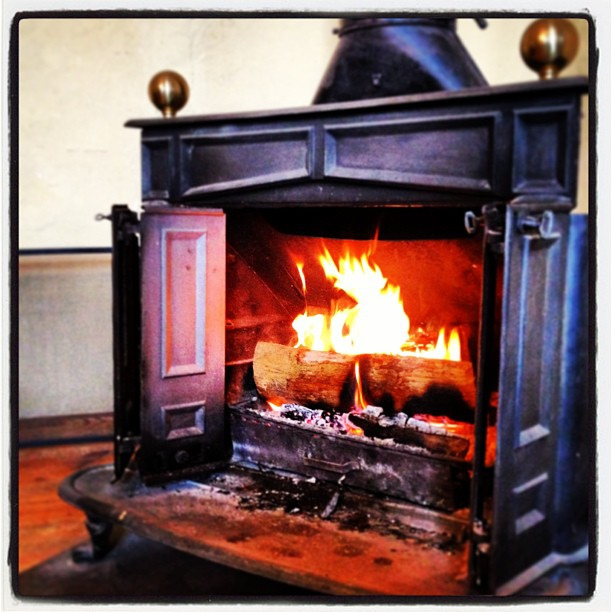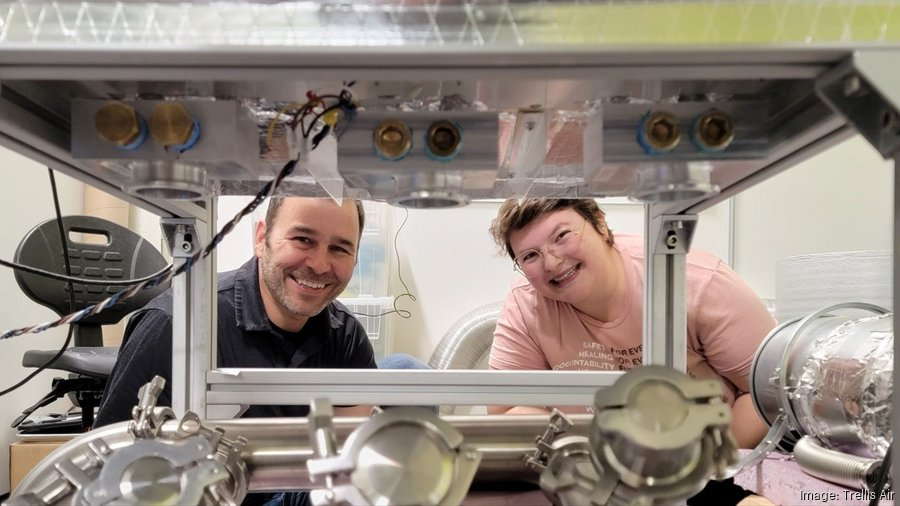
Benjamin Franklin Stove: Innovation and Impact Explored
The Benjamin Franklin stove stands as a testament to the inventive genius of one of America’s most renowned figures. This innovative heating device, conceived during a period marked by extreme cold, revolutionized domestic warmth while contributing to the understanding of atmospheric phenomena. Historian Joyce Chaplin delves into this lesser-known invention, illuminating how it reflects Franklin’s significant role in American history and climate adaptation. By examining Franklin’s effective use of convection in his designs, we can appreciate how his work not only addressed immediate needs but also laid the groundwork for future scientific explorations. As we explore the intersection of Franklin’s stove and broader environmental issues, we uncover vital lessons on technology and human resilience in the face of climate challenges.
Often referred to as Franklin’s fireplace design, the stove embodies the spirit of 18th-century ingenuity and practicality. This remarkable apparatus was not just a tool for heating; it represented a critical shift in how individuals interacted with their environment and adapted to climatic extremes. Through its innovative design, the Franklin fireplace addressed pressing issues of efficiency and air quality, solidifying Franklin’s reputation as a pioneer in early American science. Joyce Chaplin’s exploration of this invention also highlights its place within the broader tapestry of Franklin’s numerous contributions, from his fascination with lightning to his keen observations of weather patterns. As we delve into the legacy of this device and its impact on heating technology, we gain insights into the interconnectedness of invention, culture, and the vital need for climate consciousness.
Understanding the Franklin Stove: A Revolutionary Invention
The Franklin stove is not just a device for heating; it represents Benjamin Franklin’s innovative approach to environmental challenges in the 18th century. This invention aimed to maximize warmth while minimizing the amount of wood consumed, addressing both comfort and sustainability. Historians like Joyce Chaplin argue that the stove can be viewed as a critical turning point in American history, where scientific insight met practical necessity. By blending efficiency with a commitment to climate adaptation, the Franklin stove set the stage for future advancements in heating technology.
Furthermore, the Franklin stove’s design was a remarkable illustration of how Franklin applied principles of convection and atmospheric science in everyday life. His insights into how warm air rises and circulates were groundbreaking, and they helped him create a heating solution that would not only warm homes but also facilitate a better understanding of atmospheric phenomena. Such innovations reflect Franklin’s broader contributions to science and technology, making this seemingly modest invention central to his legacy.
Joyce Chaplin’s Examination of Franklin’s Contributions
Joyce Chaplin, a prominent historian, offers a deep dive into Franklin’s life and inventions through her recent work, shedding light on the often-overlooked aspects of his contributions. While most people might immediately think of the lightning rod or bifocals, Chaplin highlights the Franklin stove as a vital component of Franklin’s legacy. In her view, understanding this invention provides insight into Franklin’s character and his desire to improve the living conditions amidst the environmental challenges of his time.
Chaplin emphasizes that the stove was more than just an innovative heating device; it was part of Franklin’s broader efforts to comprehend and adapt to the unpredictable climate of the 18th century. The winter of 1740-1741 was severe, leading Franklin to develop solutions that addressed not only physical warmth but also the philosophical implications of human adaptability. By focusing on this narrative, Chaplin challenges the common perception of Franklin, presenting him as a forward-thinker dedicated to the intersection of science and societal needs.
Lessons from Franklin’s Ingenuity Applied to Modern Climate Issues
In today’s world, as we grapple with climate change and environmental degradation, Franklin’s approach to innovation reveals crucial lessons for contemporary society. His inclination to consider the consequences of his inventions speaks to the urgent need for responsible technological advancement. As Chaplin notes, Franklin was always aware of the socio-environmental implications of his work, striving to create technologies that would not only meet immediate needs but also preserve resources for future generations.
Moreover, Franklin’s endeavor to minimize emissions from his stove indicates an early understanding of pollution’s harmful effects, long before the term ‘climate crisis’ existed. This awareness resonates with today’s challenges, urging modern inventors and policymakers to think critically about the sustainability of their solutions. Echoing Franklin’s spirit, we must recognize that no single invention can solve the intricate web of climate issues we face; rather, a collaborative approach using diverse strategies is essential for meaningful change.
The Role of Franklin’s Inventions in American History
Benjamin Franklin’s inventions played a pivotal role not only in scientific advancement but also in shaping American history. The Franklin stove, specifically, contributed to the improvement of domestic life in the colonies while reflecting the broader Enlightenment ideals of progress and innovation. Historians like Joyce Chaplin argue that Franklin’s ability to merge science with practicality laid the groundwork for future American ingenuity, making him a key figure in the evolution of American science.
Franklin’s work on the stove also intersects with significant historical narratives, such as resource management and environmental conservation. As settlers expanded into new territories, the implications of deforestation and resource scarcity became apparent. The stove serves as a metaphor for Franklin’s broader awareness of these challenges, showcasing how his inventions were not merely technological feats but responses to the pressing issues of his time.
The Intersection of Franklin’s Science and Atmospheric Phenomena
One of the most intriguing aspects of Franklin’s work is how his inventions intersected with the study of atmospheric phenomena. The principles behind the Franklin stove contributed not only to indoor heating but also to an understanding of air movement and weather patterns. By correlating the functioning of his stove with natural occurrences like storm systems and the Gulf Stream, Franklin showcased a remarkable ability to connect scientific thought with practical application.
This duality in Franklin’s work laid the foundation for future explorations in meteorology. Joyce Chaplin highlights that his pamphlets not only explained how the stove operated but also made atmospheric science accessible to the public. Such contributions are vital in recognizing how Franklin’s scientific inquiry extended beyond invention to shape educational dialogues that influenced entire generations of thinkers, emphasizing the importance of scientific literacy in everyday life.
Franklin and Climate Adaptation: Lessons for Today
Climate adaptation is a pressing concern today, and Benjamin Franklin’s insights can provide valuable lessons. His response to the extreme weather of the Little Ice Age showcased a proactive mindset, aiming to utilize his inventions to create comfort and safety in the face of environmental challenges. Joyce Chaplin’s work underscores that Franklin’s advancements were not merely reactions but rather anticipatory moves that considered the longer-term implications of climate impact.
Franklin’s adaptability shines a light on the importance of resilience in the face of climate change. His innovative spirit and dedication to using scientific understanding to drive improvements in daily life remind us that contemporary efforts in climate adaptation must similarly embrace innovation and sustainability. By learning from Franklin, we can develop multi-faceted strategies to address today’s climate crises, emphasizing the need for both individual and collective actions in creating environmentally conscious solutions.
Revisiting the Use of Natural Resources in Franklin’s Era
The consumption and management of natural resources during Franklin’s lifetime raise important questions about sustainability that remain relevant today. As settlers expanded their territories, the demand for firewood grew, prompting Franklin to address not just the need for heat but also the long-term consequences of resource depletion. His invention of the Franklin stove, designed to use less wood, exemplifies a shift in thinking about resource efficiency and climate adaptation.
Chaplin’s exploration of Franklin’s concerns about resource scarcity reflects a burgeoning awareness of environmental stewardship in American history. Engaging with these historical narratives can provide a framework for understanding modern resource management challenges. Just as Franklin sought efficient use of materials to ensure comfort, today’s innovations must balance convenience with responsible stewardship to secure a sustainable future.
Benjamin Franklin’s Legacy: From Invention to Education
Franklin’s legacy extends beyond his inventions; it encompasses a broader educational mission that aimed to empower the public with scientific knowledge. Through his writings and pamphlets, he made complex scientific ideas accessible, encouraging a culture of inquiry and public engagement with science. His stove serves not only as a technological breakthrough but also as an educational tool that implicitly taught countless individuals about the principles of heat, air circulation, and atmospheric science.
Joyce Chaplin’s examination of this aspect of Franklin’s work highlights the importance of education in advancing society. By democratizing scientific knowledge, Franklin enabled individuals to participate in understanding and responding to their environment. In a contemporary context, as societies confront complex challenges like climate change, Franklin’s legacy reminds us of the vital role education plays in public discourse and policy-making, enabling informed decision-making and community action.
The Cultural Impact of Franklin’s Scientific Innovations
The cultural impact of Benjamin Franklin’s scientific innovations, including the Franklin stove, extends far beyond their practical applications. These inventions symbolize the Enlightenment ideals of progress and reason that characterized early American society. They serve as a testament to the belief in human ingenuity and the capacity to harness science for the betterment of daily life. As Joyce Chaplin illustrates, Franklin’s contributions became a part of the American narrative, highlighting the interconnectedness of innovation and cultural identity.
Moreover, Franklin’s innovations also reflect changing attitudes towards technology and nature. The integration of scientific principles into everyday objects encouraged a shift in how people perceived their relationship with the environment. This cultural transformation continues to resonate today, as we strive to reconcile technological advancement with environmental stewardship. By acknowledging the lasting influence of Franklin’s work, we can better appreciate the ongoing dialogue between society, technology, and the natural world.
Frequently Asked Questions
What is the significance of the Benjamin Franklin stove in climate adaptation?
The Benjamin Franklin stove, invented by Franklin during the harsh winter of 1740-41, was a crucial climate adaptation that aimed to improve heating efficiency. Its design allowed for greater warmth with less wood, addressing the challenges posed by severe cold and deforestation, thus enhancing comfort during extreme weather conditions.
How did Joyce Chaplin highlight Benjamin Franklin’s contributions to science through his stove?
Joyce Chaplin’s book examines how the Benjamin Franklin stove was not just a heating device but also a means to understand atmospheric phenomena. Franklin’s principles of convection applied to both indoor heating and outdoor weather patterns, linking his practical invention to scientific exploration.
What were some of the innovative features of the Benjamin Franklin stove?
The Benjamin Franklin stove featured a unique design that improved heat distribution within a room and minimized smoke emissions. This innovative approach allowed for the re-burning of smoke, making it more efficient and reducing air pollution, showcasing Franklin’s forward-thinking approach to technology.
Why is the Franklin stove considered one of his lesser-known inventions?
While many people recognize Benjamin Franklin for inventions like the lightning rod and bifocals, the Franklin stove remains lesser-known despite its significant impact on American heating methods. Joyce Chaplin’s work aims to elevate its importance by framing it within the context of Franklin’s broader scientific contributions.
How does the Franklin stove relate to Benjamin Franklin’s understanding of atmospheric phenomena?
The Franklin stove exemplified Benjamin Franklin’s interest in atmospheric phenomena, as he used its design to explain principles of convection and how they relate to weather systems. His scientific writings connected the heating of indoor environments with outdoor climatic patterns, making advanced scientific concepts accessible to the public.
What lessons does the invention of the Benjamin Franklin stove provide for today’s climate challenges?
The Benjamin Franklin stove serves as a historical reminder that innovation alone isn’t enough to address climate issues. Joyce Chaplin suggests that a multifaceted approach, similar to Franklin’s iterative improvements, is necessary to tackle today’s complex environmental challenges, rather than expecting a single technological solution.
In what way did the Franklin stove influence American history and technology?
The Franklin stove influenced American history and technology by revolutionizing home heating methods, emphasizing efficiency and sustainability. Its introduction represented a shift in thinking about how innovation could improve quality of life, tying together themes of technology, comfort, and environmental adaptation in 18th-century America.
How did Franklin’s awareness of environmental issues shape the design of his stove?
Franklin’s awareness of environmental issues, particularly the scarcity of firewood due to deforestation, motivated him to design a stove that would use less wood while providing greater warmth. This concern for comfort in adverse conditions underscored his belief in using science and technology to improve daily life.
| Key Point | Description |
|---|---|
| Historical Context | Joyce Chaplin examines the impact of Benjamin Franklin’s inventions during the cold winter of 1740-1741, a period that significantly influenced his design of the Franklin stove. |
| The Franklin Stove | A highly efficient heating system designed to burn less wood while producing more heat, it represented a crucial adaptation to the harsh climate of the time. |
| Scientific Contributions | Franklin used the principles of convection to explain both indoor heating and atmospheric phenomena, such as the Gulf Stream. |
| Environmental Awareness | The stove’s design also reflected Franklin’s concerns about emissions, as he aimed to minimize smoke output and improve air quality. |
| Lessons for Today | Chaplin’s book connects Franklin’s innovative spirit with modern climate challenges, advocating for a multifaceted approach to environmental issues rather than one single ‘solution’. |
Summary
The Benjamin Franklin stove emerged as a pivotal invention in the 18th century, not merely for its ability to provide warmth but for its role in advancing scientific and environmental awareness. Through his design, Franklin not only revolutionized heating but laid groundwork for our understanding of atmospheric processes. Today, as we face pressing climate challenges, the lessons from the Franklin stove’s innovative approach remain relevant, reminding us that progress is best achieved through collaboration and diverse solutions.








